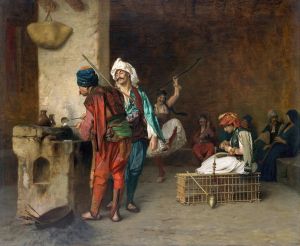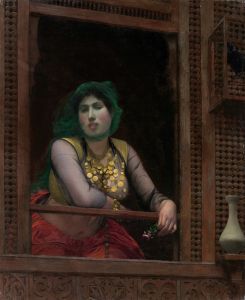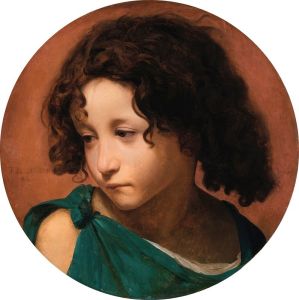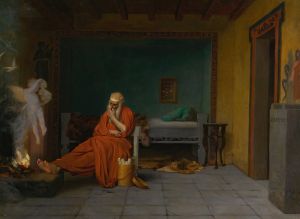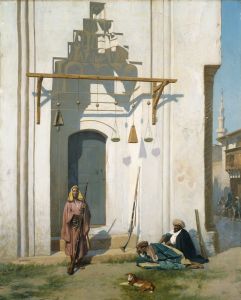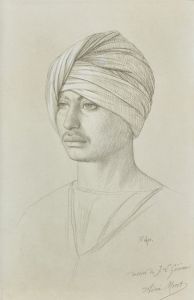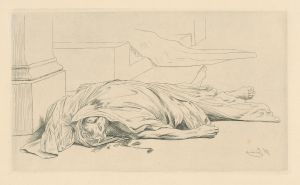
The Colossus Of Memnon
A hand-painted replica of Jean-Léon Gérôme’s masterpiece The Colossus Of Memnon, meticulously crafted by professional artists to capture the true essence of the original. Each piece is created with museum-quality canvas and rare mineral pigments, carefully painted by experienced artists with delicate brushstrokes and rich, layered colors to perfectly recreate the texture of the original artwork. Unlike machine-printed reproductions, this hand-painted version brings the painting to life, infused with the artist’s emotions and skill in every stroke. Whether for personal collection or home decoration, it instantly elevates the artistic atmosphere of any space.
Jean-Léon Gérôme's painting "The Colossus of Memnon" is a notable work by the French academic painter, who was renowned for his historical and Orientalist themes. Gérôme, born in 1824 and active during the 19th century, was a prominent figure in the academic art scene, known for his meticulous attention to detail and his ability to capture the essence of historical and exotic subjects.
"The Colossus of Memnon" depicts the famous twin statues located on the west bank of the Nile River near Luxor, Egypt. These statues, known as the Colossi of Memnon, are two massive stone figures representing Pharaoh Amenhotep III, who reigned during the 18th Dynasty of ancient Egypt. The statues were originally part of a larger mortuary temple complex, which has largely disappeared over the millennia.
Gérôme's interest in the ancient world and his travels to the Middle East and North Africa provided him with the inspiration and firsthand experience necessary to accurately portray such subjects. His painting captures the grandeur and mystery of the Colossi, set against the backdrop of the Egyptian landscape. The painting reflects Gérôme's skill in rendering light and shadow, as well as his ability to convey the scale and majesty of the ancient monuments.
The Colossi of Memnon have been a source of fascination for travelers and historians for centuries. In antiquity, the northern statue was famous for emitting a musical sound at dawn, which was attributed to the mythical figure Memnon, a hero of the Trojan War. This phenomenon was likely caused by the expansion of the stone as it was warmed by the sun, but it added an air of mystery and legend to the site. Gérôme's painting does not explicitly depict this acoustic phenomenon but rather focuses on the visual impact of the statues themselves.
Gérôme's work is characterized by its precise and realistic style, which was a hallmark of the academic art tradition. His paintings often featured historical or exotic subjects, rendered with a high degree of accuracy and attention to detail. "The Colossus of Memnon" is no exception, as it demonstrates his commitment to capturing the essence of his subjects through careful observation and technical skill.
The painting is part of Gérôme's broader body of work that explores themes of antiquity and the Orient, reflecting the 19th-century European fascination with these regions. Gérôme's art was influential in shaping Western perceptions of the Middle East and North Africa during this period, although it has also been critiqued for its role in perpetuating certain stereotypes and exoticized views.
Overall, "The Colossus of Memnon" exemplifies Jean-Léon Gérôme's ability to bring historical and cultural subjects to life through his art. The painting remains a testament to his skill as a painter and his interest in the ancient world, offering viewers a glimpse into the grandeur of Egypt's past as seen through the eyes of a 19th-century artist.





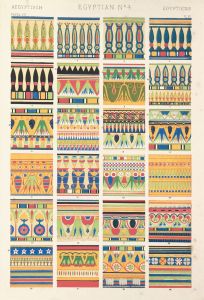
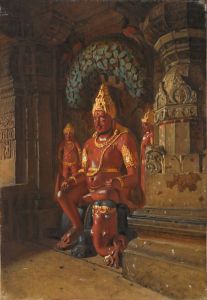
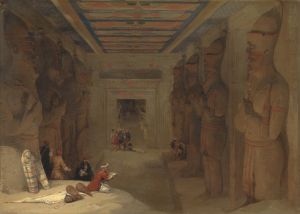
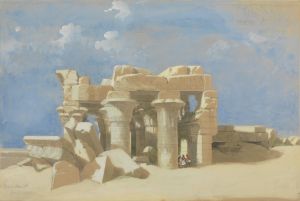
![Excavated Temple of Gyrshe [Gerf Hussein], Nubia.](/imgs/217480/s/david-roberts-excavated-temple-of-gyrshe-gerf-hussein-nubia-fb4767b0.jpg)
![Front elevation of the Great Temple of Aboosimble [sic]. Nubia.](/imgs/217485/s/david-roberts-front-elevation-of-the-great-temple-of-aboosimble-sic-nubia-c5cdea0a.jpg)
